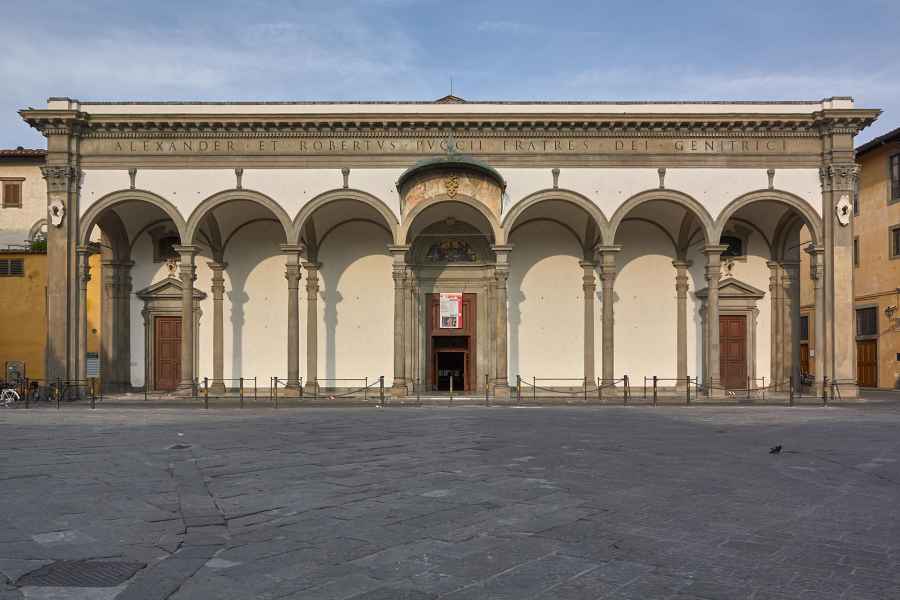Returning to Florence not later than April 24, 1500, Leonardo took the place of Filippino Lippi in the commission for executing the paintings for the high altar of Santissima Annunziata. For this reason he accepted the hospitality of the monks, going with his assistants to lodge in the monastery.
In 1550 Vasari writes that, «Upon returning to Florence, Leonardo found that the Servite friars had commissioned Filippino to paint the altarpiece for the high altar in the Nunziata; this caused Leonardo to declare that he would gladly have painted a similar work. Upon hearing this Filippino, like the kind and gentle person he was, withdrew, and so that Leonardo might paint it, the friars took him into their household, paying the expenses for him and his whole family. Then Leonardo kept them waiting for a long time without ever beginning anything. During this time, he did a cartoon representing Our Lady and Saint Anne with the figure of Christ, which not only amazed all of the artisans but, once finished and displayed in a room, drew men, women, young and old to see it, as if going to a solemn festival, to gaze upon the marvels of Leonardo, which stupefied the entire populace. For in the face of this Madonna all the simplicity and beauty that can justly be attributed to Christ's mother can be seen, since Leonardo wished to show the modesty and humility of a virgin delighted to gaze upon the beauty of her child, who holds Him tenderly in her lap, while with a modest downward glance she notices Saint John as a little boy who is playing with a lamb, not without a smile from Saint Anne, overjoyed to see her earthly progeny become divine.»
Fra Pietro da Novellara, in a letter to Isabella d’Este dated April 3, 1501, confirmed that Leonardo was working on the cartoon for the Saint Anne; the location of the latter, which is not the one now in the National Gallery of London, is still unknown.
In the offices of the Military Geographic Institute there have recently been found, adjacent to parts of the building still owned by the monastery, the rooms where Leonardo would have been able to lodge for a long time and probably to work on the "marvels" of the cartoon. Although having been remodelled more than once, these rooms can be attributed to the great architect Michelozzo, who belonged to Brunelleschi's circle. The suggestion that some frescoes still existing in these rooms should be attributed to Leonardo is instead groundless.
The church of Santissima Annunziata was remodelled after 1440 by Michelozzo, but its rotunda was probably designed by Leon Battista Alberti. The portico is the work of Antonio da Sangallo, while in the Chiostrino dei Voti are found, in addition to a Nativity by Alessio Baldovinetti with a landscape that undoubtedly caught the attention of Leonardo, frescoes by the leading figures in Mannerism who came after Leonardo, such as Pontormo, Rosso Fiorentino and Andrea del Sarto.

Basilica and convent of the Santissima Annunziata
Texts by
Alessandro Vezzosi, in collaboration with Agnese Sabato / English translation by Catherine Frost
Related resources
External links
Gallery
Related resources
External links
Gallery










